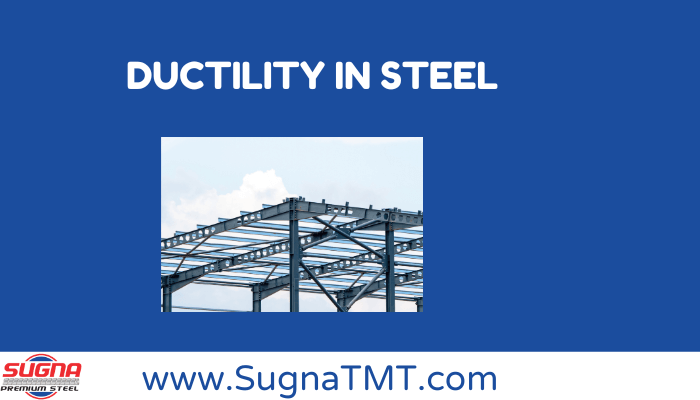Ductility is a crucial property in steel that impacts its performance in construction and other applications. Let’s delve into what ductility in steel means and why it matters.
What is Ductility?
Ductility refers to the ability of steel to deform under tensile stress. This means it can be stretched into a wire or bent without breaking. High ductility allows steel to absorb significant amounts of energy before fracturing.
Importance of Ductility in Construction

Enhances Structural Integrity
Absorbs Stress Ductile steel can absorb stress and redistribute it throughout the structure. This helps prevent sudden failures.
Withstands Extreme Conditions In areas prone to earthquakes or heavy winds, ductile steel provides added safety. It can flex and bend, reducing the risk of collapse.
Improves Safety
Prevents Brittle Failure Brittle materials break without warning. Ductile steel, on the other hand, shows signs of deformation before failure, allowing for timely repairs.
Increases Longevity Structures made with ductile steel tend to last longer. The steel can endure repeated loading and unloading cycles, which is common in buildings and bridges.
Factors Affecting Ductility in Steel
Composition
Carbon Content Lower carbon content generally increases ductility. Higher carbon makes steel harder but less ductile.
Alloying Elements Elements like nickel, chromium, and manganese can enhance ductility. They alter the steel’s microstructure, making it more flexible.
Manufacturing Process
Controlled Cooling Slow and controlled cooling of steel improves its ductility. Rapid cooling can make steel brittle.
Heat Treatment Processes like annealing and tempering enhance ductility. They relieve internal stresses and improve the steel’s overall toughness.
Testing for Ductility
Tensile Test
Measures Elongation A tensile test measures how much a steel sample can be stretched. The elongation percentage indicates its ductility.
Bend Test
Evaluates Flexibility A bend test checks if steel can bend without cracking. This is crucial for materials used in construction.
Applications of Ductile Steel
Earthquake-Resistant Structures
Safety in Seismic Zones Buildings in earthquake-prone areas use ductile steel to absorb seismic energy. This reduces damage during quakes.
Bridges and Highways
Handles Dynamic Loads Ductile steel can handle the constant loading and unloading from traffic. This makes it ideal for bridges and highways.
Industrial Machinery
Withstands Wear and Tear Machinery components made from ductile steel last longer. They can withstand high stress and strain during operation.
Choosing the Right Steel
Consult Experts For high-quality ductile steel, hire experts like Sugna TMT. They offer reliable products and professional guidance.
Conclusion
Ductility is a vital property in steel that ensures safety, durability, and performance in various applications. From construction to industrial machinery, ductile steel offers numerous benefits. Understanding its importance can help in selecting the right materials for your projects. Always opt for trusted suppliers like Sugna TMT to ensure quality and reliability in your steel products.

